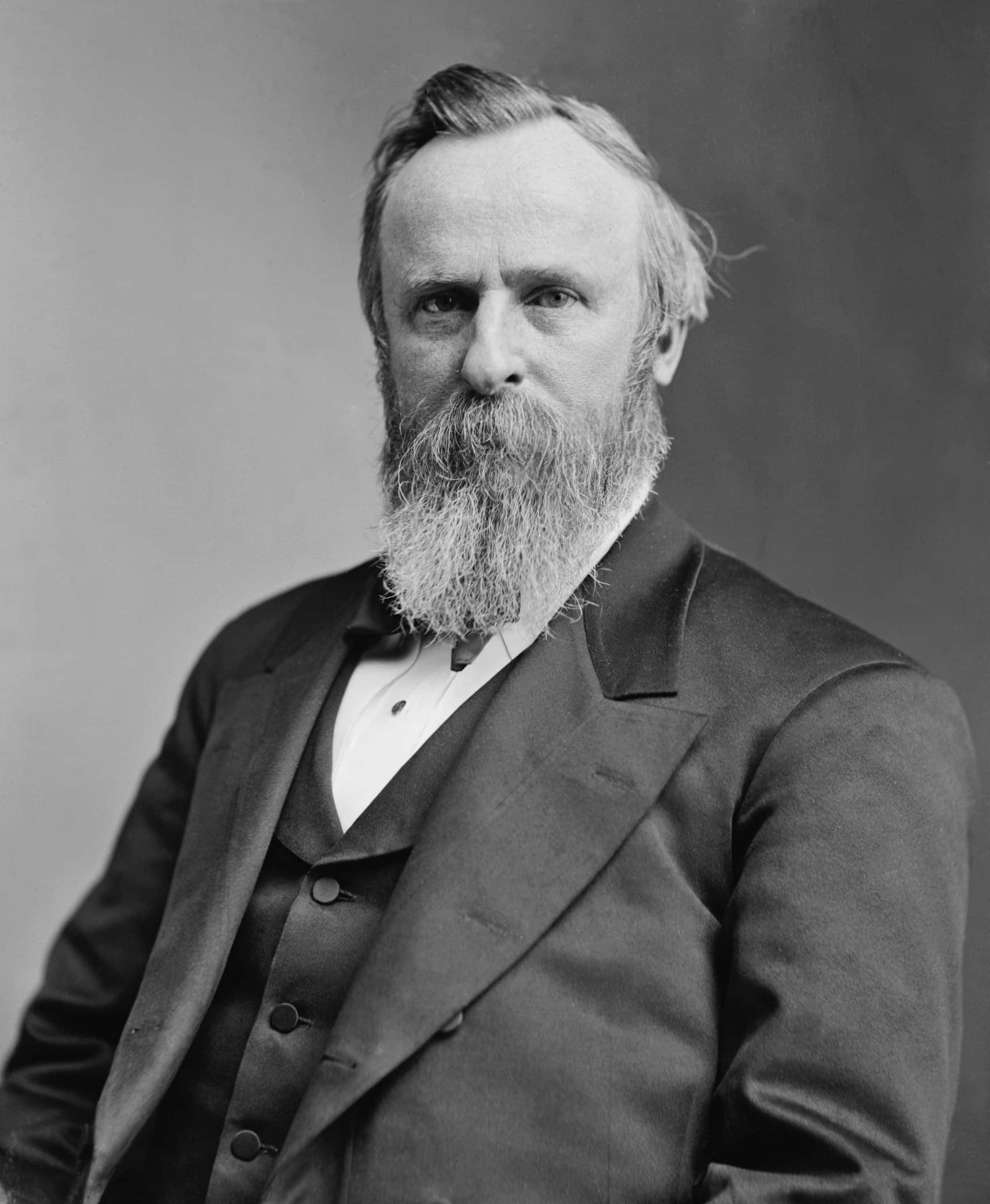President Rutherford B. Hayes was from Ohio and had won the Election of 1876 in a very controversial way when he defeated Samuel Tilden of the Democrats.

A bargain was reached by the Democrats and Republicans that would give Hayes the office of president. Hayes agreed only to serve one term and promised to end Reconstruction in the South. Hayes also promised to place one Southerner on his cabinet.
Rutherford B. Hayes is just a dot on the national level, but in Ohio, he was Governor and a prominent and popular citizen. The Rutherford B. Hayes Home is an important historical site in Northeast Ohio.
Jump to:
Presidential Term
March 5, 1877: Rutherford B. Hayes delivers his inauguration speech. He also appoints David Key as Postmaster General to his cabinet, which fulfills one of his promises.
March 20, 1877: Hayes sends a commissionary to Louisiana for a report on how Reconstruction is going. The report provides him a reason to withdraw federal troops from the south and end reconstruction.
April 10, 1877: Hayes begins to withdraw federal troops from South Carolina. South Carolina then elects former Confederate General Wade Hampton as Governor from South Carolina.
April 24, 1877: Hayes withdrew troops from Louisiana, which would end Reconstruction.
June 1, 1877: Hays sends troops to patrol the Mexican-Texas border and gives permission to stop Mexican bandits that were crossing the border and harassing them.
July 16, 1877: The Great Railroad Strike of 1877 begins.
June 22, 1877: Trying to create reform within the government, Hayes gives an executive order that would no longer allow government workers to participate in political campaigns and not be fired because of their political association.
September 6, 1877: Hayes fires Chester A. Arthur for not following an executive order.
January 17, 1878: The United States and Samoa sign a treaty of friendship and nonexclusive rights to a naval station in the capital city, Pago Pago.
February 22, 1878: The Greenback Party adopts a platform that supports the silver backing of coinage and a top to Chinese immigration.
February 28, 1878: Hayes's veto of the Bland-Allison Act is overridden. The act remonetizes silver for currency.
March 1, 1878: Hayes vetoes a bill that would forbid immigration from China.
March 23, 1878: The President recognizes the government of Porfirio Diaz in Mexico. This would ease tensions along the border.
November 1878: Democrats take control of both houses of Congress in the mid-term elections.
January 1, 1879: Civil War Greenbacks are retired in accordance with the Specie Act of 1875.
April 29, 1879: Hayes vetoes the Appropriation Bill that would ban the use of Federal Troops at voting booths. This was a direct threat to the enforcement acts pushed through by President Grant to protect African-American voting rights. This veto gives Hayes much support in the Republican Party.
June 7, 1880: Despite being a somewhat popular candidate among the Republican Party, Hayes honors his promise not to run for a 2nd term, and James Garfield was elected as the Republican nominee for President.
June 24, 1880: Winfield Scott Hancock becomes the Democratic nominee
November 2, 1880: Garfield is elected President of the United States.
November 17, 1880: The United States and China sign a treaty that regulates Chinese immigration but does not prohibit it. China is granted trading privileges.
